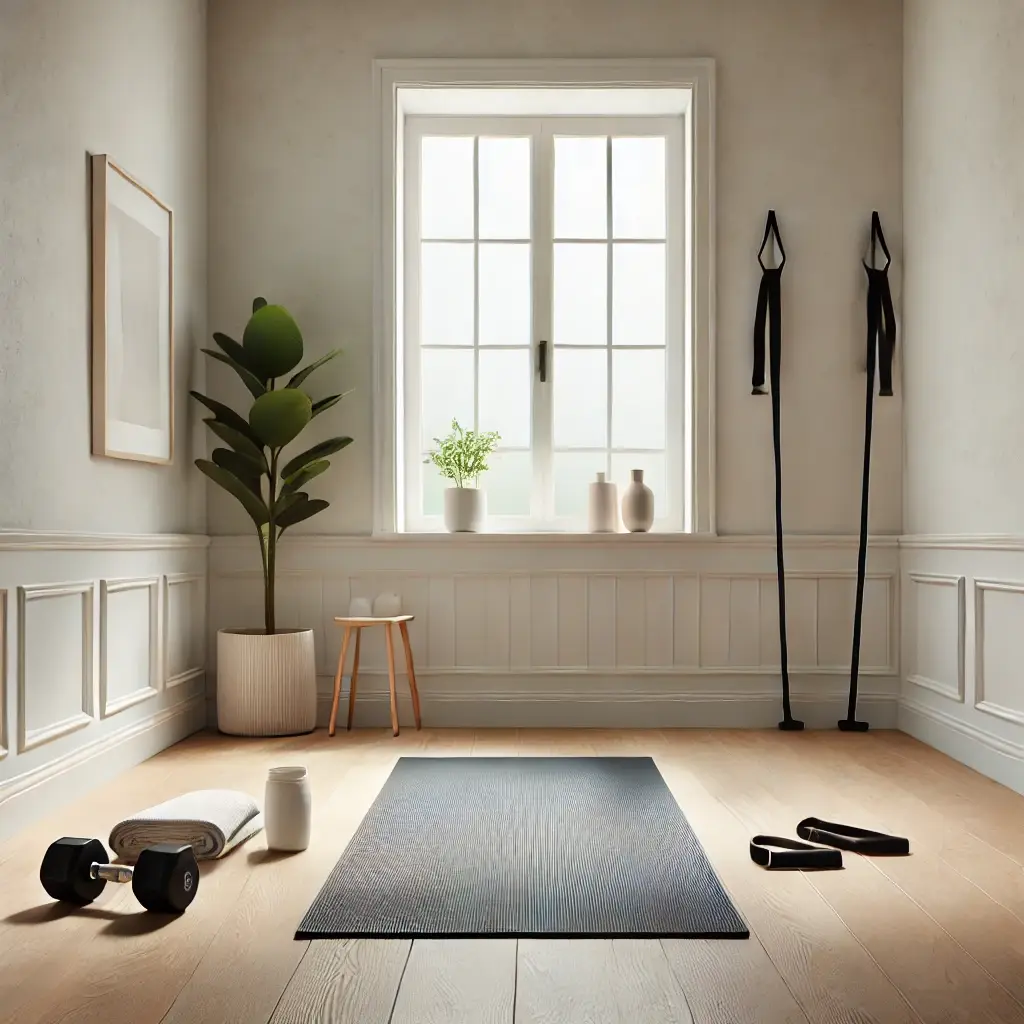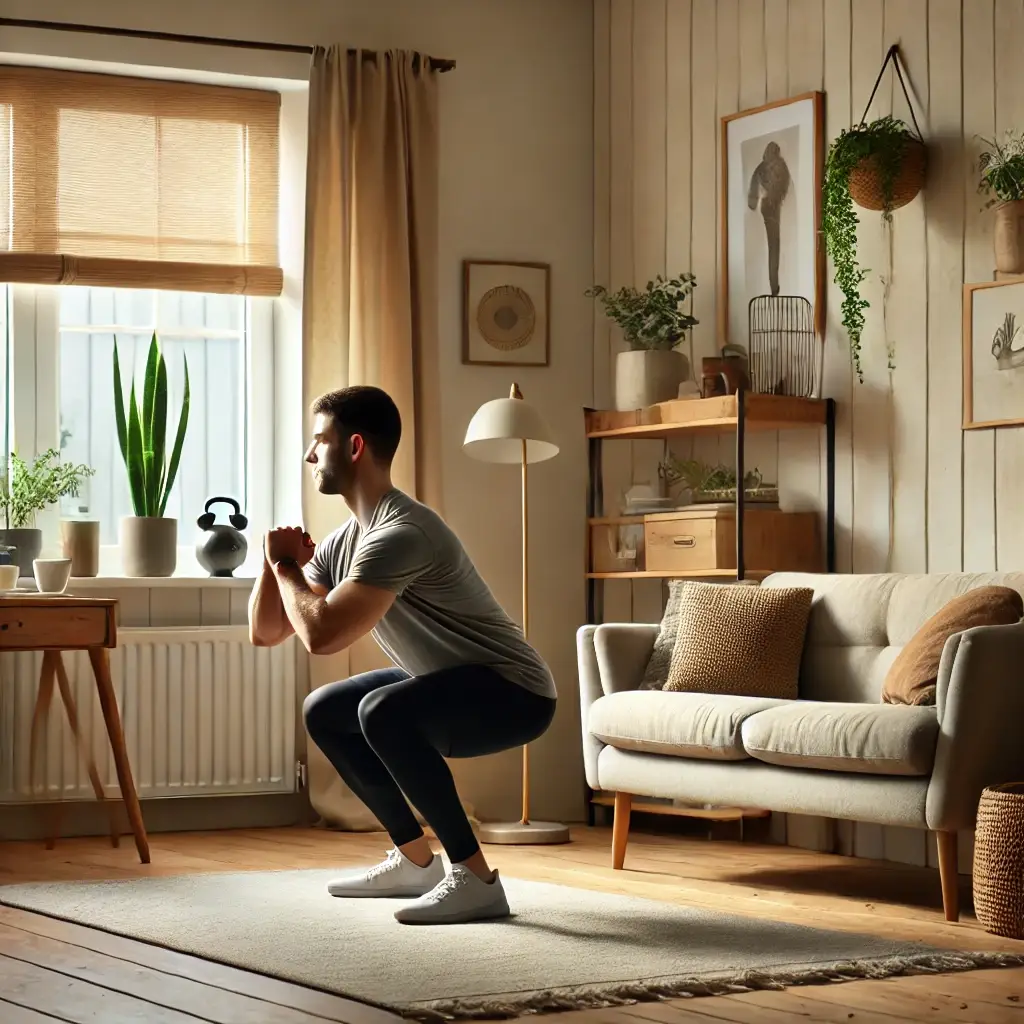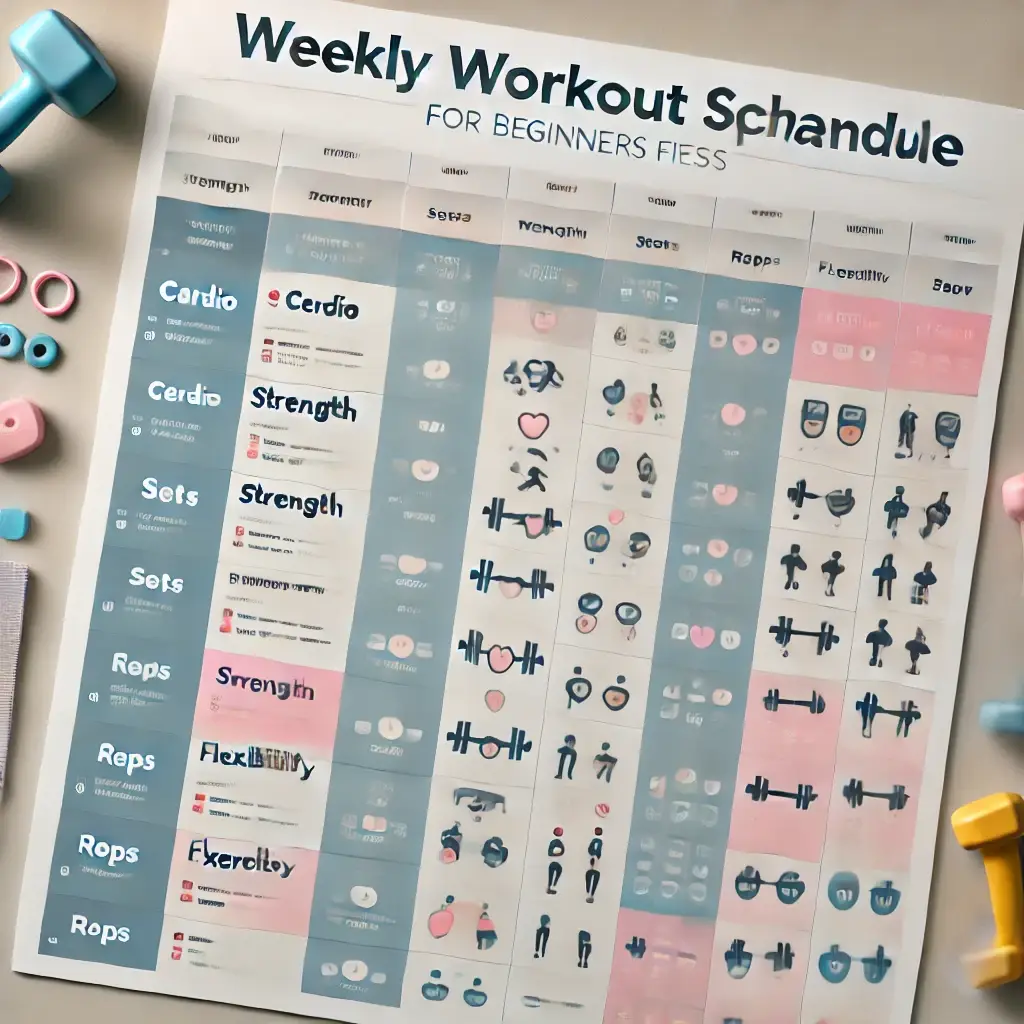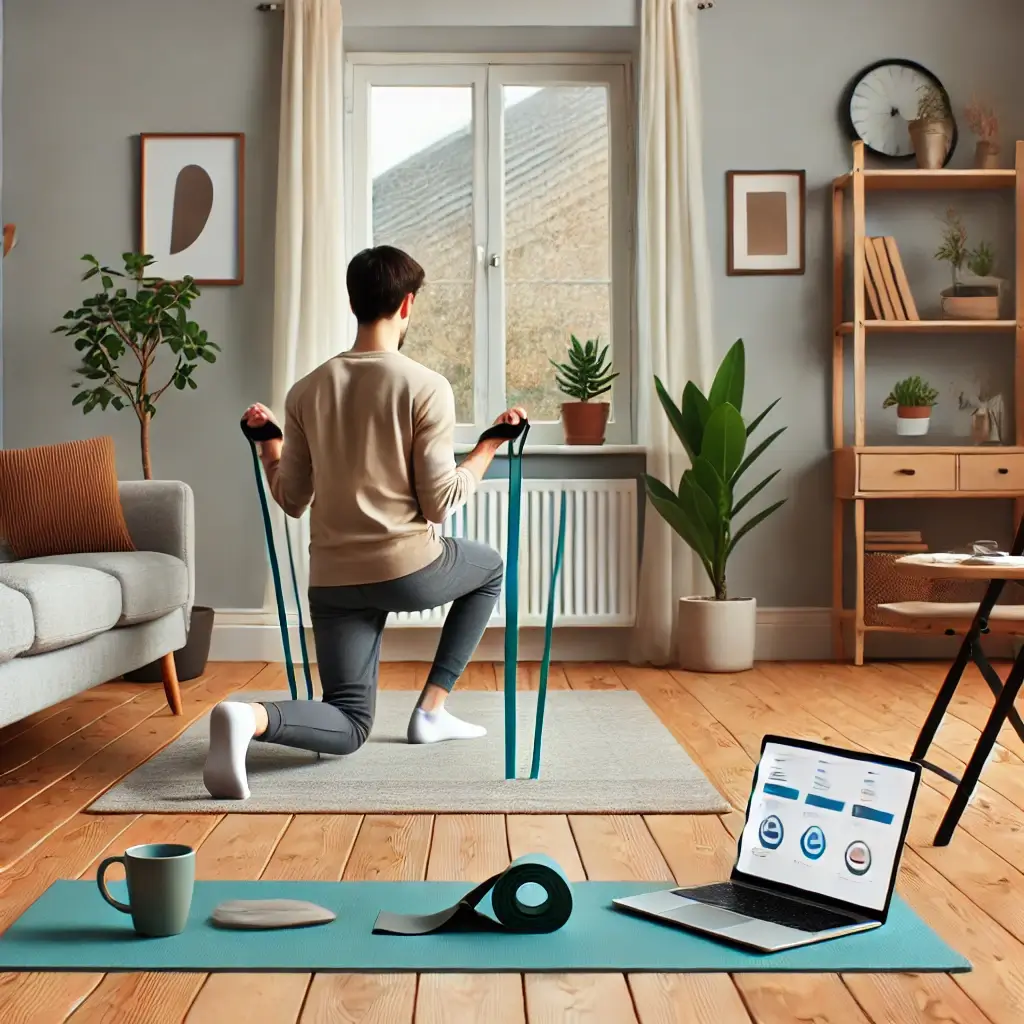Home Workouts: A Comprehensive Step-by-Step Guide
In recent years, home workouts have become incredibly popular. People love the flexibility and convenience of exercising at home without the hassle or cost of a gym membership. This guide will walk you through each step of starting a home fitness routine, packed with data, trends, and practical advice. By following these steps, you can create a sustainable workout plan that fits into your life.
Home workouts offer many benefits that align with modern lifestyles. Not only are they accessible and flexible, but they also allow you to work out at your own pace. Plus, research supports their effectiveness:
- Convenience: Exercise on your schedule without commuting to a gym.
- Cost-Effective: Save on gym memberships by using affordable or even no equipment.
- Safer and Health-Conscious: You control your environment, which 11% of U.S. consumers prefer to avoid crowded spaces.
Stats on Home Fitness Growth
- The global online fitness market was valued at $6.04 billion in 2020 and is expected to grow to $59.23 billion by 2027, demonstrating a strong preference for home and virtual workouts.
Additional Insights:
The rapid growth in online fitness is largely driven by convenience, affordability, and increased safety awareness. In 2020 alone, online fitness classes saw a massive spike in engagement as more people turned to virtual options during lockdowns. Now, this trend has solidified as a permanent shift, with hybrid workout solutions (combining in-person and online classes) becoming the new normal. Notably, 68% of gym members now prefer a mix of both virtual and physical workout options, which shows changing attitudes toward fitness routines.
If you’re a beginner, explore this simple beginner workout routine to get started.
Setting goals is the first and most crucial step to a successful fitness routine. Your goals will shape the exercises you do, how often you work out, and the type of equipment you might need.
Types of Fitness Goals
- Lose Weight: Incorporate high-intensity workouts and focus on calorie-burning exercises.
- Build Strength: Focus on resistance training and exercises that target specific muscle groups.
- Increase Flexibility: Include stretching, yoga, or Pilates to improve mobility and flexibility.
- Boost Mental Health: Exercise can reduce stress and improve mood. Regular movement releases endorphins, the body’s natural “feel-good” chemicals.
Tips for Goal Setting:
- Be Specific: Instead of a vague goal like “get fit,” aim for something measurable, like “lose 5 pounds in a month” or “do 10 push-ups without stopping.”
- Start Small: Setting smaller goals at first makes them more achievable and helps build confidence.
- Track Progress: Keeping a journal or using a fitness app can make tracking easier.
Additional Goal Setting Ideas:
- Make It Visual: Create a vision board or use sticky notes with your goals written on them. Keeping your goals in sight will help you stay motivated.
- Check-in Regularly: Set a weekly or bi-weekly schedule to assess your progress and make any necessary adjustments to your workout plan. Progress isn’t always linear, and minor changes can lead to long-term success.
For long-term success, read our guide on staying motivated to achieve your fitness goals.
A dedicated workout space helps you focus and keeps you consistent. You don’t need a large area—just a small, clean space that you associate with fitness.

Essentials for Your Home Gym
- Yoga Mat: Essential for comfort and stability.
- Resistance Bands: Ideal for strength training without weights.
- Dumbbells or Household Weights: Water bottles or milk jugs can serve as substitutes if you don’t have dumbbells.
- Chair or Wall: Useful for exercises that require balance or support, like triceps dips.
Data on Equipment Use:
- About 30.4% of U.S. exercisers use weightlifting equipment at home, with most spending under $500 on their home gym setup.
Tips for Creating an Inviting Workout Space:
- Keep It Clean and Decluttered: A neat space makes it easier to focus and stay motivated.
- Add Personal Touches: Consider placing motivational quotes, posters, or even houseplants in your workout area to create a comfortable and inspiring atmosphere.
- Good Lighting: Proper lighting can make a huge difference in how inviting your workout space feels. Natural light, if available, is always best.
Warming up is crucial for preparing your muscles, reducing the risk of injury, and improving performance. It also helps boost circulation and loosen joints.
Simple Warm-Up Routine

- Jumping Jacks: Full-body movement to increase heart rate.
- High Knees: Engages lower body and core.
- Arm Circles: Prepares shoulders for upper-body movements.
- Leg Swings: Loosens hip flexors and stretches leg muscles.
Additional Warm-Up Exercises:
- Hip Circles: Stand on one leg and rotate the opposite leg in circular motions. This helps loosen up the hip joints.
- Butt Kicks: Light jog in place while kicking your heels towards your glutes to engage your hamstrings.
Spend 5–10 minutes on a warm-up to prepare your body for the workout ahead.
Once you’re warmed up, it’s time to start exercising. For beginners, bodyweight exercises are a great choice because they don’t require equipment but still build strength and endurance.
Strength Training

- Squats: Strengthens legs and glutes. Start with body weight, and progress to holding weights.
- Push-Ups: Builds arm, chest, and core strength. You can modify with knee push-ups if needed.
- Lunges: Works legs, core, and balance. Do alternating lunges, stepping forward with one leg at a time.
Additional Tips:
- Wall Sits: Hold a seated position against the wall to engage your legs and core. This is an excellent beginner-friendly static exercise.
- Plank Variations: Plank on your knees or perform side planks to gradually build core strength.
Cardio Exercises
- Jump Rope: Great for heart health and calorie burning.
- Mountain Climbers: Combines cardio and core strength. Engage your abs as you “climb” in a plank position.
Additional Cardio Exercises:
- Burpees: A full-body movement that incorporates strength and cardio. Beginners can step back instead of jumping to reduce intensity.
- Marching in Place: If you don’t have space for more intensive cardio, marching in place is an easy way to keep moving.
Flexibility and Core
- Yoga Poses: Poses like child’s pose and downward dog improve flexibility and relieve tension.
- Dynamic Stretching: Move through stretches like leg swings and arm circles to improve range of motion.
Additional Exercises for Flexibility:
- Cat-Cow Stretch: A yoga move that warms up the spine and increases flexibility.
- Seated Forward Fold: Sit on the floor and slowly reach towards your toes to stretch your hamstrings and lower back.
Boost your fitness routine by incorporating these immunity-boosting superfoods to support your body and energy levels.
Consistency is key for fitness success. A weekly workout schedule can help keep you on track. Here’s an example of a balanced routine.
| Day | Activity |
|---|---|
| Monday | Cardio (20 mins) |
| Tuesday | Strength |
| Wednesday | Flexibility |
| Thursday | Cardio |
| Friday | Strength |
| Saturday | Flexibility |
| Sunday | Rest |

Tips:
- Rest days are just as important as workout days. They give your muscles time to recover.
- Alternate between strength and cardio for a well-rounded routine.
- Keep Variety: Incorporate different styles of exercise (HIIT, yoga, strength) each week to keep it fun and avoid boredom.
- Schedule Workout Time: Treat it like any other important appointment—plan it in your calendar to ensure it gets done.
Tracking your fitness journey is essential for staying motivated and seeing improvement. Regularly reviewing your progress helps you adjust your goals and celebrate milestones.
Tracking Tools
- Fitness Apps: Log workouts, track progress, and monitor sleep or calories.
- Wearables: Devices like Apple Watch or Fitbit monitor heart rate, steps, and activity levels.
Stats on Home Fitness Tech:
- 86.3 million U.S. adults now use fitness apps, with the market expected to grow to $34.97 billion by 2030.
Additional Ways to Track Progress:
- Progress Photos: Take pictures every 2-4 weeks to visually track changes.
- Strength Logs: Keep a log of how much weight you’re lifting or how many reps you’re performing to monitor improvements in strength.
For additional mental health benefits, explore our article on boosting mental wellness.
Home workouts have unique challenges, from limited space to lack of motivation. Here’s how to tackle them:
Common Challenges & Solutions of Home Workouts
- Lack of Motivation: Set a reward for completing a week of workouts. Tracking progress can also help keep you motivated.
- Limited Space: Focus on bodyweight exercises or minimal equipment that doesn’t take up much room.
- No Equipment: Use household items, like water bottles, as weights.
Additional Tips:
- Join Online Communities: Engage with others through virtual classes or social media groups for support and accountability.
- Set Alarms: Schedule reminders to prompt you to work out at the same time every day.
Did You Know? 41% of fitness enthusiasts now prefer online classes over in-person gym sessions.
Safety should be a top priority, especially if you’re working out at home without supervision. Proper form and a gradual increase in intensity will help prevent injuries.
Safety Tips
- Listen to Your Body: Don’t push through pain.
- Stay Hydrated: Drink water throughout your workout.
- Perfect Your Form: Watch online tutorials to learn the correct posture and technique for each exercise.
Additional Precautions:
- Use Mirrors: If possible, use a mirror to check your form during exercises.
- Wear Proper Footwear: Even at home, appropriate shoes can help provide stability and reduce the risk of injury.
- Cool Down: Always spend time cooling down with stretches after your workout to reduce muscle stiffness and aid in recovery.
Here are some bonus tips to maximize your home workout experience:
- Stay Consistent: Try to work out at the same time every day to build a routine.
- Mix It Up: Vary your workouts to keep things interesting and avoid plateaus.
- Find a Workout Buddy: Even if they’re remote, a workout buddy can keep you accountable.
Additional Tips:
- Reward Yourself: Treat yourself when you reach a goal—new workout gear or a healthy meal can be great rewards.
- Use Music: Create a high-energy playlist to make your workout sessions more enjoyable and motivating.
- Track Your Mood: Note how you feel before and after your workouts to see the mental health benefits over time.
For long-lasting success, check out our tips on motivating yourself to achieve your goals.
Home workouts are a powerful way to take control of your fitness on your own terms. With this guide, you’re well-equipped to set up a structured, effective home workout routine. Here’s a recap of what we covered to get you started:
Summary of Key Steps
- Set Clear Fitness Goals: Decide whether you want to focus on weight loss, muscle gain, flexibility, or mental health. Keep your goals small and specific to begin with, and track progress to stay motivated.
- Set Up Your Workout Space: Choose a dedicated space at home and equip it with basics like a yoga mat, resistance bands, and a chair. This doesn’t need to be costly; most people spend under $500 on their home fitness setup.
- Warm-Up Essentials: Always warm up to prepare your body. Try simple exercises like jumping jacks and high knees for about 5–10 minutes before each workout.
- Do Beginner-Friendly Exercises: Focus on bodyweight exercises like squats, push-ups, lunges, and yoga poses that are effective without equipment. Incorporate cardio moves, such as mountain climbers and jump rope, for heart health.
- Plan a Weekly Workout Routine: Structure a weekly plan that balances cardio, strength, and flexibility, allowing rest days for recovery. Consistency and variety are key to seeing progress.
- Track Your Progress: Use fitness apps or wearables to log workouts and monitor improvements. Celebrate milestones to maintain motivation.
- Overcome Challenges: Address common home workout obstacles, such as limited space or lack of motivation, by modifying exercises and setting rewards for consistency.
- Follow Safety Tips: Prioritize good form, listen to your body, and stay hydrated. Safety is essential, especially when working out unsupervised.
Final Encouragement
Remember, there’s no “perfect” way to start a fitness journey. Each step forward, no matter how small, is a success. Consistency beats perfection, and every workout brings you closer to your goals. The power of home workouts lies in their flexibility and adaptability—make your routine your own, and enjoy the process.
By following these steps, you’re creating a sustainable, effective workout plan that fits seamlessly into your life. As the demand for home fitness continues to rise, you’ll have access to more tools and resources to enhance your journey.
Whether you’re just starting out or looking to refresh your routine, remember that every workout counts. Stay consistent, keep your goals in sight, and enjoy the journey to a healthier you.
Need more tips? Explore our home workout routine for beginners or learn how to boost mental wellness as you stay active.
Good luck, and start today!


6 Comments